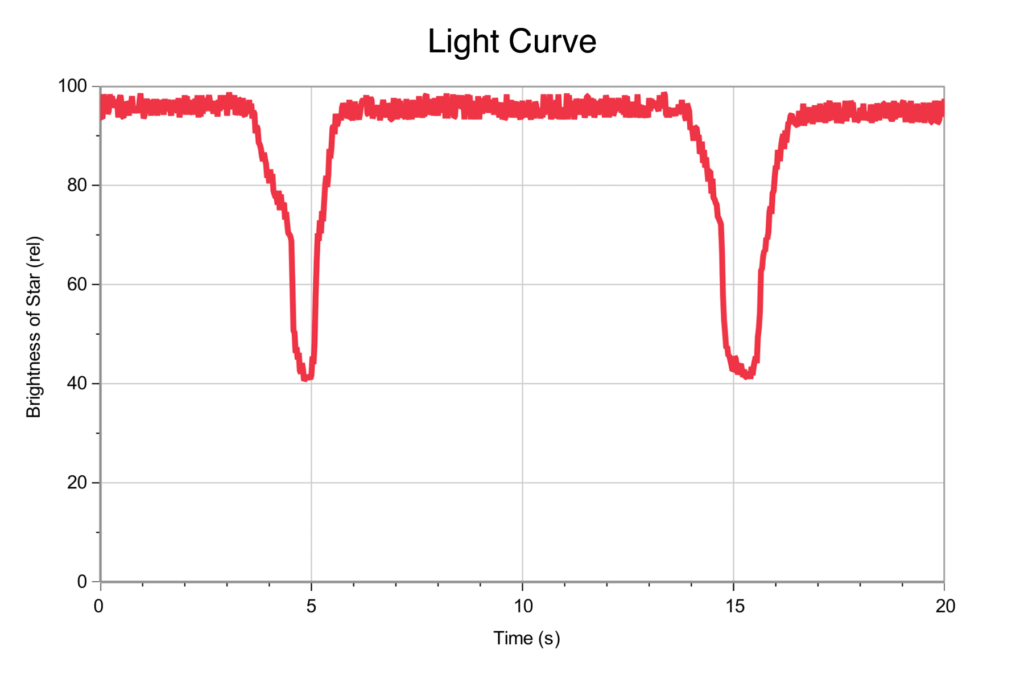In the search for life beyond our planet, Astronomers are particularly interested in planets outside our solar system (extrasolar planets). Since these planets are too far away to be visible, finding and studying them can be a challenge. One way to locate and study extrasolar planets is to observe the light from a star as an orbiting planet passes in front of the star (transits). By observing the variation in the intensity of light from the star, it is possible to determine the presence of a planet, its diameter, and the size of its orbit. Combining this information, it is possible to determine whether life might be possible on the planet. astronomers refer to the “Goldilocks region,” where it is neither too hot nor too cold for liquid water to be present but is “just right.”
Peter Newbury, through the Carl Wieman Science Education initiative at the University of British Columbia, developed an interesting way of modeling the transit technique in the classroom or laboratory. He recently presented his work at a meeting of the Astronomical Society of the Pacific. Using a Vernier Light Sensor, Interface and Logger Pro, students pass a “planet” in front of a light source representing the central star of another solar system. The data collected from the Light Sensor in Logger Pro closely model the data produced by the Microvariability and Oscillations of Stars (MOST) microsatellite, a space telescope project based out of the University of British Columbia. Students then compare their collected data to real-life data collected by the probe.
For instructions and student handouts of the activity, including actual Kepler data, visit Newbury’s blog, Science Edventures: http://bit.ly/planetactivity
NASA’s Kepler space probe uses the transit method, and the project website includes many related educational resources: http://kepler.nasa.gov

